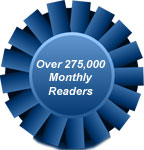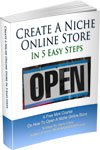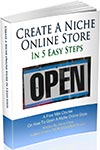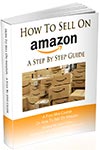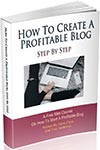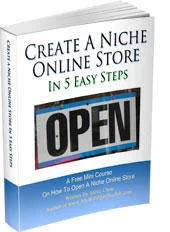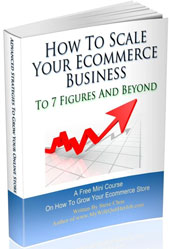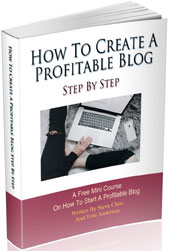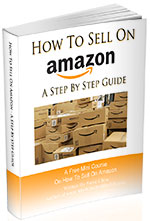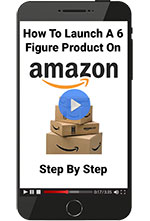Podcast: Download (Duration: 53:01 — 61.0MB)
In this episode, I sit down with Norm Farrar, one of the most respected voices in ecommerce and Amazon selling.
We dive into what’s actually working right now, from building brands that command higher prices to avoiding the traps that cause most sellers to fail whether it’s DTC or Amazon.
Get My Free Mini Course On How To Start A Successful Ecommerce Store
If you are interested in starting an ecommerce business, I put together a comprehensive package of resources that will help you launch your own online store from complete scratch. Be sure to grab it before you leave!
What You’ll Learn
- Why most sellers crash and burn on Amazon
- The simple shifts top earners are making right now
- How to future-proof your Amazon biz in 2025
Sponsors
SellersSummit.com – The Sellers Summit is the ecommerce conference that I’ve run for the past 8 years. It’s small and intimate and you’ll learn a ton! Click Here To Grab The Recordings.
The Family First Entrepreneur – Purchase my Wall Street Journal Bestselling book and receive $690 in free bonuses! Click here to redeem the bonuses
Transcript
Welcome back to the podcast, the show where I cover all the latest strategies and current events related to e-commerce and online business. Now in this episode, I sit down with Norm Farrar, one of the most respected voices in e-commerce and Amazon selling. We dive into what’s actually working right now from building brands that command higher prices to avoiding the traps that cause most sellers to fail, whether it’s DTC or Amazon. But before we begin, I want to let you know that tickets for Seller Summit 2026 are now on sale over at sellersummit.com.
00:29
And if you sell physical products online, this is the event that you should be at. Unlike most events that are filled with high-level fluff and inspirational stories, Seller Summit is all about tactical, step-by-step strategies you can actually use in your business right away. Every speaker I invite is deep in the trenches. People who are running their own e-commerce stores, managing inventory, dealing with suppliers, and scaling real businesses. No corporate execs and no consultants. Also, I hate big events, so I intentionally keep it small and intimate.
00:57
We cap attendance at around 200 people so you can actually have real conversations and connect with everyone in the room. We’ve sold out every single year for the past nine years and I expect this year to be no different. It’s happening April 21st to 23rd in Fort Lauderdale, Florida and if you’re doing over 250K or $1 million in revenue, we also offer a private mastermind for higher level sellers. Right now, tickets are the cheapest they’re ever gonna be so if you want in, go to SellersSummit.com and grab your ticket. Now onto the show.
01:32
Welcome to the My Wife Quitter Job podcast. Today I have Norm Ferrar on the show. And if you sell physical products online, he is someone that you absolutely need to know. He is a legend in e-commerce and the Amazon space. He is an entrepreneur, business coach and host of the Lunch with Norm podcast and the Marketing Misfits podcast. I’ve been on that show before and he’s interviewed some of the biggest names in e-commerce.
01:59
Now over the years, Norm has built, scaled and advised multiple seven and eight figure brands, both on and off of Amazon. And he’s an expert when it comes to branding, influencer marketing, logistics, sourcing. He’s helped hundreds of sellers. Now in this episode though, we’re going to be talking about how to grow an Amazon business through community and how to stand out in an oversaturated marketplace and the real strategies that people are using today. He doesn’t hold back and uh welcome to the show, Norm.
02:29
you doing man? Hey, it’s great to be here. And you’ve been on both podcasts, by the way. I have been on both podcasts. And thank you so much in 2023 when I was helping to you helped me promote my book, which I’m very appreciative of. No selling books is difficult. It is tough. I don’t recommend it to anyone. Yeah. Okay, so one thing that I want I’ve been on both your podcasts before and
02:54
You have a lot of things going on. Like I was just kind of looking on your site. Where are you personally focusing your time today? And one thing that I wanted to know also is are you still selling at Amazon actively? I am. uh I really love working with brands though. Like I’ve, I see so many opportunities that people are missing. So many of these niches that are sub niches, sub niches of sub niches.
03:23
that have opportunity nowadays. And it just takes time. But when I, when I, like I talk a lot to different people at events and people come up to me and they’ll start talking to me about their products or send me over their products. used to have something on our lunch with Norm podcast called trash my product. People would send me their products and I would just trash them. But, but I mean, I would say the good, the bad and the ugly. And people still don’t get it today.
03:51
They’re just not marketing properly. They’re using 2017, uh, you know, techniques, long keyword titles, horrible bullets, just keyword stuffing. That’s what it comes down to. They’re not understanding or keeping compliant with Amazon. And so I kind of lean that way because I see that there’s so many opportunities to help people. And, um, I think if the opportunity arose, uh, oh, by the way, like we have our own.
04:21
factory in China. So my family has owned this factory in China for about seven or eight years. And we had two factories in Taiwan. yeah. Yeah. So we were doing subcontracting, uh not subcontracting, but contract manufacturing. had our own private labels. And to this day, we have our own private labels uh in the PPE space on Amazon. And then I have some in the beauty space and pet space.
04:48
Okay, I want to dig into this a little bit. How does one start a factory in China? Well, technically, technically, I cannot start a factory in China, but we have general managers in China that are working the product, the manufacturing component for us. But you own it, right? Meaning like you spent the money to develop the factory. We developed everything we built the machineries, we the machinery, we did everything.
05:15
In fact, I’m going to tell you, if you don’t mind, I’ll tell this really crazy story about an eight figure business that started with my mom going to CVS in the States, coming back with cosmetic foam. And she said, you know, I hate when this foam turns yellow. And my dad said, oh like, what do you mean? It’s not white and it’s not white all the time. It always turns yellow in the bag.
05:44
And she says, you know, you should do something about that. And my dad said, Oh yeah, do you think, do you think that would sell? And she goes, every woman needs cosmetic foam. So my dad’s very entrepreneurial and he went out, he hired a chemist. He built this machine in the middle of this factory in Auburn, Maine. Then that machine ended up in Taiwan and we had produced, we became the probably the number one.
06:12
producer of EVA foam and cosmetic foam in the US and globally. And we did all sorts of things with it. It started out with cosmetic foam. It turned into wooden stamps, that little EVA part where we started manufacturing the whole wooden stamp. Like overnight we became the number one, the largest uh child’s uh wooden stamp manufacturer. We opened up another factory, but this all started from my mother saying, oh, can you turn this yellow? uh
06:42
turned this white and my dad just taking that opportunity and just saying, wow, this, could be something. So that’s how it all started. It went from Auburn, Maine, like he had a place up here in Toronto, family business. worked with my dad for a long time in Auburn, Maine. He had multiple companies already under his belt, but then the opportunity came to go to Taiwan in 19, in the 19 early 1990s, had the two factories there and then went over to China.
07:10
because it wasn’t cost effective in Taiwan anymore. Are either your parents, do they speak the language? No, no, but my brother really like he does bunkerisms in Chinese. Interesting. Okay. That’s amazing. That’s an incredible story, Norm. Seriously. Wow. Yeah. And you know, so I come from an entrepreneurial family, but if I see an opportunity, I jump on it in a second.
07:40
And that might be a problem. You know, I see shiny objects. I like to get rid of those shiny objects. And when I find something I like, I like to hop all over it. Like right now, um I’m finding an opportunity. Now, a lot of people are going to go, Oh God, but I found a huge opportunity in the cigar market and like having a proper database where you can find the information and the paraphernalia. So there’s not a really great online source for that. So today,
08:10
One of the things that I’m working on is is building out sort of and I’m hoping to do this the world’s Best cigar database. That’s what I want to do. See that’s enough to actually work and I think you know Cuba hasn’t been open all that long, right? Is that why no one’s done it before or no like manufacturers have done it and cigar aficionado They started the rating system back in the 90s and they’ve done an excellent job, but I want to I think
08:40
there is an opportunity to dumb it down enough for the average consumer who doesn’t, they just want to have a smoke and then to the more enthusiast and the area that’s missing is to the cigar lounges. So if I can market these to the cigar lounges and or the, like the, the cutters and all the other things that go along with it, I think there’s a good opportunity there.
09:08
You know what, Norm? This sounds like the perfect niche for a community. So this is a good time. I am very curious what you’re doing to build that community. I mean, that was the original, what we kind of agreed upon when we, before I hit the record button. So let’s get the perfect case study of yourself. Okay. Well, like building a community. So you have a community and I have a community. So
09:36
My community started with something. There has to be something unique for the community or something that everybody just loves. And that starts like for me as a, not a service provider, but as a speaker, I wanted to, I, I grew a beard, simple Roy Orbison has glasses. I grew a beard so people could recognize me and
10:01
The reason it wasn’t for speaking engagements for I went out to every event there possibly was. I wanted, I wanted to be a sponge and I wanted to absorb as much information back in the day. And when I reached out to speakers afterwards, cause everybody would gather around them. I’d reach out later and they wouldn’t remember me. say, Oh, I was the guy in the, you know, jean jacket. I remember going up to the Wolf of Wall Street, you know, uh, Jordan Belfort sitting in the third row back. wrote him.
10:29
And I said, oh, hey, I thought your, uh, your presentation was blah, blah, blah, blah. have a question about this. I was the guy with the gray beard and I remember you and those are the, so that was the start. I, I started a community by doing something unique. Now, if you’re a brand, it’s the exact same way. You might not want to go and build a community around your brand, but you might want to build a community around.
10:57
something that everybody likes. So let’s, for example, I’ll give you an example of one of one of my clients. He, he has a knife and he was, he had no followers, nothing. And so what we looked at was first of all, the packaging, the packaging suck. We changed that. We changed the perceived value. It looked great. Then we said, how do we get people to, how do you get their email address? Well, we put a lifetime value on. So this was a start.
11:26
So QR code over to a page, lifetime value. But then we added more. We went around, we gave all these knives out to chefs all around the world. And they provided us with a recipes, enough recipes to put into a book. But that also gave us enough UGC that we could start to put into all these different social channels. And they gave us videos. But the next step, and this is what really started. Oh, we’re skipping ahead, sorry.
11:52
You gave it all these knives to chefs and then you had them create videos for you. photos and provide a recipe. Okay, was that easy to do? I yeah. Do you just send it to them or? Well, no, we did have an outreach program and we also, so we had to say like who uses chef knives, right? Well, outside of the consumer. Well, you got the chefs, but there was a culinary schools. So we reached out to culinary schools. We said, Hey,
12:22
We’ll provide all these, but we want recipes. And at the end, we want your students to hold them up, showing that they use their knives. And so they did. And that’s where the whole content trail started. So we got the lifetime guarantee that was enough. But then we said, hey, here’s a book. Now we have three cookbooks, by the way. But the final step on that landing page, which nailed it for us with this community,
12:51
which is the weekly meal plan. So every week we created a meal plan. We sent it out to each one of these people in the community and it went to this, um, just as Facebook group at the time. And that grew to 7,000 people. So the ability to have 7,000 people get a meal plan every day or every week. And then in your group, you’re not,
13:19
you’re not promoting anything. Your goal is to get them to come from that group to your brand. And then you can promote and then you know, you can have a whole different way of talking to these people, but the, the, ability to go out and grow your brand, go wide. Now the person has 11 knives and every one of those people see those product launches when they happen and
13:49
you don’t really have to discount. So you’re getting them to buy your product. They’re posting. We run contests. So it’s on their Instagram accounts or wherever they’re posting, which is gathering more people to come in. So that’s step one. So, on. have questions about step one. So you mentioned a Facebook group. I’ve actually recently started migrating my Facebook folks over to discord. Do you still find Facebook groups?
14:17
effective because I feel like the reach is not that good. We’ve our group. uh So for us, and this is a whole other topic, but it’s building different types of community like do blitz marketing for community. So we do have a Facebook group and they still have a Facebook group. We’ve transferred a lot of our uh our community over to our WhatsApp group. So yeah, we found that WhatsApp
14:46
was a lot more engaging. here’s when you know, and I’m gonna come back to the other group in a second, but here’s when you know that you’ve got a group, like a community. And we kind of joked around just before we came on here about uh moderators, but you can build a group, you can get that group going, you get really involved with the group, you’re actively involved with the group, and then as people are coming in, they’re asking questions.
15:15
And you start to see other people answering the questions. And then you can see like there are going to be people that come in spam and you got to get rid of them quickly. So you get a few moderators. Well, I can go for a week without even checking on the group and I’ll come back and there’s like 50 questions or 50 conversations going on. That’s when you know it’s successful. There’s a lot of people that mix up, um, engagement and followers with vanity.
15:45
And so you might have 400 people in a group and that group is just moving and shaking while you have 10,000 people in this other group because you bought a whole bunch of followers and all you get is a whole bunch of thumbs up emoji, emoji, emoji, uh, and it’s nothing. So it’s worth way more at the end of the day to have a group that’s engaged and you have to prompt sometimes if you start to see the group kind of, you know, going into a law.
16:14
Ask a question, have a survey, but keep them engaged. And uh like for us, our engagement is it’s been there for about three or four years and it’s steady. Sometimes you’ve got to give it a pat on the butt and maybe run a contest or do something, but it works. then to get more people into that group. uh Like for me, it’s easy with the podcast. uh If I, or if I go on other people’s podcasts, people might hear me.
16:44
then they might go over to the group. But for a brand, they should do the same. They should check out a podcast. You know, if it’s a pet product, go on other people’s podcasts, write a press release, do something, drive content. And here’s something I think we might have talked about this. uh When people are writing content nowadays, lot of it is just press a button and that shouldn’t be. uh Some of it’s got to be unique. For me, like I have a content uh company,
17:14
And that company, it writes press releases, but I have to have that sort of senior editor position that makes sure that the content is correct. They fact check it and then they send it out. And then if we’re writing a blog article to go around with that press release, it’s gotta be something that we can change up. And we change that up every, it could be every quarter. We try to change it up a bit just to kind of get Google going, aha, it’s, know, we got some more.
17:43
contact, but what they content, but what they miss. Most people take a look at it, Steve, you go to a blog, so many people write about blog articles to get keywords, and then they forget to put in a call to action. Sure. You know, so how that can build a community. So back to that knife community. Yeah. Like, how do you get people talking? Like, presumably people were there for the recipes? Is that is that accurate? Or
18:13
What were they there for? Yeah. Well, we ended up putting out three cookbooks. So as soon as we put out the cookbooks, that’s great. Hey, we could do a refer a friend. So there’s a refer a friend campaign. uh Just as we’re speaking right now, we’re doing something very different, which is one of the best things that I love to build a community. And that’s the newsletter. So.
18:41
I’ve got more response and more leads off of my newsletter than my podcast. And I thought it would be the other way around. Uh, Kevin, uh, Kevin King, same exact same thing with the brands. think you can do the exact. And we just started working on two different ways to build out your community. And that’s going to be the newsletter and that’s going to have recipes. It’s going to be probably be talking to.
19:08
chefs or you know, people in the business bloggers, people that want to add content and we’ll have a really nice, not a newsletter that sucks. It’s gotta be good. It’s gotta present value. And, um, so that’s going to be our next step. And we think that we’re going to be able to at least double our community fairly quickly. And we’re doing a referral contest and we just like anybody buys the product. We always ask them if, if they want to, uh,
19:38
we generate different types of contests for different products that we use or different times of the year. And sometimes we’ll get swamped with content just because people, you know, wanna, and we’re not giving them anything. They just wanna put something up showing that they’re using the knife. We have had a uh contest where we’ve given out, you know, four or five different products, or we’ve given out something completely different.
20:08
Like, um, what are they called? Apple iPod, not the iPods. That’s the big thing against your head. AirPods, AirPods. That’s what I I’m old. I, know, I I get a pass. Uh, but you’ve got to just keep changing it up, seeing what’s different and for us. So in our newsletter, how do I do it differently than the next person? I have a personal story that I have a business twist every, every, uh, once a week.
20:38
And then we have something that you’ve experienced it called the wheel of Kelsey. And that’s a contest that anybody can enter for whatever was on the podcast that week through the newsletter. And that just keeps people coming back and you can see where the engagement is. And you’ll see that, you know, if people like the article, like there’ll be a poll underneath it. And that’s just different. So we have to find that for each brand. And if you can do that, you can have that.
21:07
newsletter go out and you’ve got all those, let’s say 7,000 emails. Now you can do other things. You can do an email campaign. You could just do a fact of the day. You could send out a recipe a day. And you know, if you think that, Oh, you know, I’m going to be annoying people. Well, they’ll unsubscribe. Then you got nothing to worry about, you know, get them out of there quick, you know, and, and the people that want to see your product and a lot.
21:34
or your service or whatever it is, they’ll continue it. uh Kevin King was telling me, like I was talking about this yesterday. said, you know, I want to put out the newsletter. I’m putting out a couple of other emails. You know, is that too much? And he goes, no, you do this every day. says, I know people that email people six times a day. said, well, that’s completely annoying. I mean, I would unsubscribe and says, well, it wouldn’t be suited for you.
22:04
I said, yeah, I guess you’re right. I just wanted to take a moment to tell you about a free resource that I offer on my website that you may not be aware of. If you are interested in starting your own online store, I put together a comprehensive six day mini course on how to get started in e-commerce that you should all check out. It contains both video and text based tutorials that go over the entire process of finding products to sell all the way to getting your first sales online. Now this course is free.
22:33
and can be attained at mywifequitterjob.com slash free. Just sign up right there on the front page via email and I’ll send you the course right away. Once again, that’s mywifequitterjob.com slash free. Now back to the show. You know what, I guess my definition of community is slightly different than what we’re talking about here. um For me, a community is a place where they can interact with each other, right? What you’re describing is like a newsletter where you’re building a community of people who follow you.
23:03
uh So for that knife brand is the Facebook group is it like poppin? It’s it’s it’s doing there’s two different groups. The one is really popping because it’s about recipes and then they start sharing their own recipes and cooking ideas and you know, just just different ways of doing things. You know how to heat a potato, uh you know faster, you know, just really cool little
23:32
bits of information. Then you have the other site, which still provides value and they have the, they have a recipe of the week. Uh, they have value added products, but the real community is the community that’s talking about the niche. Okay. Okay. And like for, for example, with, with you, if you want to have a community popping that, that newsletter draws people, it’s a funnel. It draws people into the community.
24:03
And then you can start talking like we’re, we’re one common value, right? So like-minded individuals and that could be either brand or it could be niche. So yeah, it, it, it’s all just different ways that you can funnel down. I guess one of my problems in the past with communities, like a Facebook group, for example, is that you need to jumpstart the engagement somehow. So it sounds like what you do is you do contests.
24:32
and you do giveaways and whatnot. How often are you doing those? And do you need to have a moderator in there in the beginning? Like in the beginning, jumpstarting it? Are you posting every day in there? I’m trying to put, yeah, at the beginning, a hundred percent, maybe even more. Uh, like for the WhatsApp group, we were posting and we were sharing, uh, we kind of got away from that because we had all the moderators and there was a lot of questions coming in then.
25:02
I started to notice that there was a bit of a drop off. So, and I’m by drop off, I’m talking about like 2%. And then I thought, okay, got together with my son said, what do you think we can do to keep this thing going and build the group a bit bigger? And so what it was, was taking uh any Amazon updates or AI updates and posting them into the group. And we asked the group, I said, would you like us to provide
25:32
More content here, or would you like us just to back off a bit and you guys just ask the questions, answer the polls? And it was, yeah, don’t go crazy. This is exactly what was said. Don’t go crazy with updates. But, you know, so we started doing, yeah, here’s one a week or two a week. If something really interesting came up and that got people talking. So, uh, like just the other day, uh, a big one that came out was that big hack on Facebook.
26:02
Oh, yeah. So we noticed that that was happening. And then we put it right onto the group. And okay, that got people talking. You know, how do I check this? And so that was that was great. And we’ll probably do another one next week. But between that, there’ll be 50 to 25 chats going on. Okay. What so on WhatsApp, that’s not like, let’s say you have like 7000 people on WhatsApp, isn’t that get a little out of hand? Oh, yeah.
26:30
But that’s not that’s not where the the the knife brand is. That’s where our brand is. OK, but even for you guys, like even if it’s like a couple hundred people, that’s out of control already, isn’t it? No, not at all. Because yeah, because you’re going to have your main contributors, you’re going to have those, you know, that 10 percent. So let’s say let’s say there’s 50. So you have 500 people in a group. So you got 50 people that are going back and forth. Or there might be that next.
26:59
step down that next group that might add engage, you know, once in a while. Well, it’s those 10 % that are asking, uh, answering the questions. So you’ll see the same names coming up and they’re, they’re helping, they groom, and you’ll find out that, uh, a lot of those people will actually act as your referral model. And this is where that newsletter comes in. So out of our newsletter, we’ve got
27:26
we’ve got around 11,000 people on the newsletter right now and all organic, all organically grown. And you’ll find out that I wasn’t really paying attention to referrals. And then we started doing it again. And I think last month, I’m not a hundred percent sure, but I think we got like three or 400 referrals. So I would have, I would have grown this a lot faster if I would have done this a lot earlier.
27:55
How do you implement the referrals? So just to be clear, there’s a link, right? If someone clicks in, refer someone, they get credit for the referral, right? They get credit. And what we did, we made it really simple. A lot of, uh, places that are building communities say, give us five of these five referrals and you’ll get a cup of coffee. just say, Hey, give us one, give us a referral. And we’re going to give you this really cool prompt. Uh, it’s a PDF.
28:24
And then the next one is a small course um that we talked to. One of the guys over at him. Oh, Mark Degrass over when Mark Degrass went on his own. We asked him if he had a course or anything we could use. Well, you get five and you get this course. And it’s, you know, starts to build up in value. We, you know, Honu is one of my companies. We gave a tariff Terminator. That’s a $400.
28:53
product or service. So we grew it out. And I think Kevin even gave us a virtual summit ticket. uh Anybody who gets to, I think it’s a hundred referrals or 250 referrals. They get that, but you just build it up. But the first one is just make it easy. And then they, the person that gets referred, typically you’ll see that they refer somebody. What, uh, what tool do you use to keep track of the referrals?
29:23
We use Beehive. So Beehive is, yeah, yeah. It’s perfect. it’s built into Beehive, right? It’s built into Beehive. Yeah. Okay. I see. Okay. So referrals is actually a pretty good contributor to your newsletter. sounds like it. It is. Yeah. And then you’re incentivizing. Actually, I don’t think I’m on your newsletter. I’m on Kevin’s. What? Sorry, Norm. I’ll join it right now. You know how that hurts? uh I thought it was on, but I don’t… I hear that all the time. Oh, I’m on Kevin’s. uh
29:53
It’s and it’s simple lwn.news. There’s a shame. Yeah, lunch with norm.news. Okay. No, no, no. Yeah, it’s just the acronyms. uh Okay, okay. I will join I want to see how you do. So you give out prizes after one referral. And then based on more you give away even more goodies. Sounds correct. Yeah. Okay. Love it. Okay. And I guess you could do that with e commerce as well. Right? uh Perhaps you could give away
30:24
I don’t know, perhaps free product maybe after referrals and whatnot. You can, I just, have a rule of thumb. I don’t know if you do this or not, but I don’t like giving away my own free product. I’ll give away other things. I’ll give things that are related to it. But by giving away my own price is just marketing, you know, from back old, old school marketing. Don’t give away your own product. And so
30:50
Ideally, I don’t want to give away any of my beauty products or the um pet products, but I would give related or added value products. Interesting. Well, what’s the rationale behind that? Cheapness of the brand. I see. Okay. Even if you have just like, Yeah. And you know what? If you give away a $10 bar of soap, not a lot, you know, I can’t see, like you say, I can’t see how that’s cheapening the brand.
31:19
But if you don’t see that soap or you keep that soap at, you know, a higher dollar price point, I don’t know. It’s just something I learned, you know, just through the years. makes sense. If you see it for free somewhere that instantly devalues that particular product, at least in the eyes of the consumer. Like we give out this free handkerchief for a text messaging number, for a phone number, but that
31:47
handkerchief we don’t actually carry in our store. I see that’s different. Yeah. And then usually, uh what we give away for free is just excess stock of our supplier who just wants to get rid of it anyway. Yep. And that’s perfectly fine. Okay, so okay, great. You’re building up the newsletter, and then that’s funneling people to the group and back and forth. In terms of the group, then
32:11
What do you do there to generate sales? Like whenever there’s a sale or promotion, do you just post in the group and it just kind of naturally goes out or in the uh niche group, you can do that. Like you can say that you have a new product coming out. Uh, one of the things is there’s gotta be a lot of value there. So I don’t know if you know Wilford Lightheart, but he always said, um, a great guy. He, uh, he always says you have to be engaged before you get married.
32:41
And so lots of value, lots of value. Maybe there’s nothing. mean, maybe, maybe there’s a month go by and there’s nothing in there about anything. All of a sudden you have a pre, uh, prime day sale just for the users of that group. If you want to check it out, you can come over to the brand or yeah, over to the brand. So you get them to shift momentum, come over to the brand, buy the product there. And you still got a few things going on over there. You’re still.
33:09
you know, giving some facts, recipes, whatever it could be. Um, but you’ve got them now on into that group and that’s going to be more promoting the product. These is, this is how you’ve gone from, Hey, this is cool. This is a group to starting to create raving fans. And one of the other things I should have mentioned, um, is when you start to see a repeat customer, that’s a raving fan, right? Or you can turn that person into a raving fan and
33:38
You can take that person segment segmented in your, you know, if you’re like for us with the newsletter, we can see people that are giving us lots of, um, lots of referrals. Well, I think that’s a fan, uh, for a brand. If you see that somebody in Amazon is buying a lot of your product or they’ve got repeat purchases or in your Shopify store, that’s a fan. And now you can reach out to them and see if they want to, you know, do more of a
34:07
brand ambassador role, where you’re gonna give them a discount if they can help promote your product. There’s a lot of different things you can do with loyal uh fans, and that’s the basis, that’s really the basis of building a good community. So one thing that we haven’t talked about is, are you building this community, I guess, how do you build this community off of the people who buy your Amazon products, or is this just something you’re doing independently that boosts your Amazon sales?
34:36
They can do both. So if I’m doing anything on Shopify, I’m getting their email. If I’m on Amazon, I’m using a QR code with a dynamic QR code so I can change whatever the promotion is. that landing page will, that QR code goes over to the landing page and it will be the lifetime warranty, the cookbook and uh the weekly meal plan. So that’s where we get them.
35:06
That’s how we’re building the initial community. What platforms? mean, I’ve been very dissatisfied with Facebook groups just because I feel like Facebook doesn’t really do a good job of alerting people when there are new posts. I mean, once upon a time it was good. Now it’s not so good. You mentioned WhatsApp. What other platforms did you consider and why did you go with WhatsApp actually? Cause there’s a bunch of, there’s like circle, there’s discord, there’s a school.
35:35
I imagine you’ve evaluated a lot of them. Yeah. And I am like, I have a circle account. I’ve got, I have done blitz like blitz marketing. I touch a little, I, I give people the opportunity to join a community that they want to join. So as little or as much as they want, I don’t have discord. Um, that, uh, that still kind of goes over my head, but, uh
36:03
And maybe we can talk about that because maybe I’m missing a really good opportunity on discord, but, uh, you know, we’ve, we’ve gone into tick-tock. Uh, that’s a newer venture, uh, which I thought was kind of cool. Telegram is another area that I like. I was talking with Gracie Ryback the other day and she was saying, you know, how her big group, like she loves telegram. I know a few other people that are on telegram that really love that. I had to shut it down because.
36:33
I use something called Ram Box, by the way. don’t know if you’ve ever heard of it. What is that? It’s a lifesaver. So you ever feel like you’re answering or trying to navigate all these communication channels? Yeah. Ram Box puts it all into, like you put all your social into one area. You look at one area and I have my assistant go into the accounts and anything that’s kind of generic answering. Boom. If it’s a
37:00
You know, it’s something I have to answer. She lets me know, but it’s all there. One simple. I love it. App that is that a paid app? Yeah, it is like three bucks a month or something. That’s it. Yeah, it’s cheap. It’s cheap. OK, so basically all your social media gets piped into one location. All your communicate you so you could break it into. Let’s say you have a ton of Slack groups, all one your messenger. You could have anything.
37:29
that you’re communicating with, then you can have another icon that you click and it’s all your social media and their channels, or you can have them all in one. It gives you the opportunity to take almost anything and put it into an icon where you just have to click and it’ll show you those annoying, you know, the red dots. Oh, you got a message. Well, I don’t like looking at those, but you know, if something’s urgent, I got to respond. I got to respond. love it Norm. Okay. That one tool reference.
37:58
could have saved a lot of time for everyone listening. Because it is a hassle, right? The way I do it is everything gets piped into gorgeous, but still it misses stuff from time to time. And like Discord doesn’t go in there, for example. yeah. Yeah. And it does circle. It pretty much takes care of everything. I don’t think I have Discord in there, but I’m sure it would.
38:24
filter your messages. I’ll definitely check it. So it’s called RAM box. All one word. Okay. Now in terms of managing community, you mentioned like now you can step away for a little bit or you have moderators. So two questions. One, how long does it take before you can step away? And then two, how do you find your moderators and are they paid moderators? Are they volunteers? I think at the beginning when you’re building a community, it’s your baby.
38:55
So you want to make sure that the culture is there, you you’re on track, that people aren’t abusing it. And that is a problem upfront. So one of the things that, you know, we try to do is express, uh, like going into WhatsApp, you know, they, well, here’s the interesting thing. You want to make sure that you don’t have these jerks that come into your community and are spamming and just trying to promote. And, uh, one thing I learned.
39:24
And Kevin does this on his newsletter to get into his group. You have to uh become part of the VIP. Now that VIP, how do you get there? You have to refer five people. So you actually are into, you know, whatever he’s doing. And so you refer five people. Now you have a private group. That’s a whole different ball game than kind of what I have right now.
39:52
which took a little bit and we could have changed it, but we wanted to keep it open. So there’s four questions that got to be answered. If they’re not answered, they’re automatically, you not allowed. uh But right off at the beginning, like people would post events or they would post kind of more salesy promotional material. And we had to get it where we get the, we contact the person, just let them know, Hey,
40:20
Don’t want to offend the person. So yeah, I gotta be a politician, but we don’t really want this. If you have any content, uh, that’s that you want to post from your company, that’s one thing, but don’t put the sales or promotional material. And we started showing people like, just DMing them, not really, you know, knocking them on this directly, but, uh, we DM them, we let them know. And then the, the real bad spammers, just.
40:49
kick the heck out of there. And we made it where we have to approve them. So if we see some funky number, uh, boop gone, boop gone. And if they, if they reach out and they, um, DM me and they start explaining themselves, like why the funky name or funky number, uh, then okay here, I’ll invite you, re-invite you. But we get rid of a lot of the riff-raff that way. And all of a sudden you start to see people, Hey, I’ve got a problem. I’ve got this problem.
41:19
And what we noticed is that putting everybody into one group didn’t work. If you wanted to have the general group, okay, great. We have a sourcing group. have the lounge where it’s just general stuff. Like, you know, people are talking about something funny, a game, uh, like uh a soccer game or whatever it is. They’ll just put it in and they can start talking about that. But we have five different groups. One of the.
41:46
Uh, one, and this is all under the one WhatsApp group. The one is just events. So, Hey, if you want to post your event, you can post it in here. So that helps, that helps a lot sort of streamline, you know, the each group, each group kind of has its own, uh, do’s and don’ts and culture, but, uh, that’s one way. And we had to work hard at that upfront. had to get people engaged. So that required questions.
42:15
or answers or statements, um, facts and just getting them to start to engage. And then afterwards, I would say a few months into it, um, we actually had somebody reach out to us and say, Hey, would you like me to help you be a, um, administrator? And another person did. So now I think we have five people that are doing it. And when people kind of sneak in there, people can be sneaky and all of a sudden start to spam. They’re gone in 30 seconds.
42:45
Got it. OK, it sounds like there’s a ton of work up front, right? There is a bit of work. depends on how much you want to put into it. Yeah. But it seems like you have to put the work into it if you want it to start popping without you, right? You got to create the engagement, even artificially, a little bit early on, right? Yeah. Yeah. And you know what’s interesting is the newsletter. So let’s say I have a webinar. I can put that into the newsletter.
43:13
People come on to the webinar. Other people promote the webinar. They don’t know about the group. After the webinar, you’ll notice that there’s five to 20 new people that come in from that webinar, which is from the newsletter, not the group. Right. No, I get it. I totally see the value in all this, especially in a world where uh email reach is getting reduced just because like the ISPs are more strict. Even SMS.
43:42
is getting a little bit more strict. There’s actually spam in boxes now. Yeah. Whereas if you have a community, it’s people who are kind of locked in. They know who you are. And it’s a much better way to reach people in the long run because it’s not gated by any ISP or anything like that. Right. Right. And if it’s a brand, oh those raving fans, that community really wants you to succeed. Yeah. It’s and one thing we never talked about, but another area oh that’s
44:12
big for helping to build a community is also your Google business profile. Talked about that for years and now Google maps, Google search, but that is an area where you can drive all your reviews and you can put in these shoppable images. And it’s a great source of, oh well, first of all, uh if you are, if you’re running any keyword phrase, longterm long tail keyword phrases,
44:42
and you’re number one, you’re going to take up that space. But man, it’s just, it’s such an awesome uh area to be able to really share everything about your company. And the other thing, by the way, if you are a, um, if you’re an authority for, so either authority on your brand, or if you have a profile brand company, you should have your Google knowledge panel set up and your Google knowledge graphics set up. And that way that’ll really help.
45:11
make you stand out on these searches. Okay, so that’s actually one thing that’s been tough, like getting a knowledge panel in Google is actually difficult. uh I’m curious what your procedure is. And by knowledge panel, I mean, like when you Google yourself, the panels pop up, right? Yep. What is your strategy for getting a knowledge panel? So what I did, so different keywords will generate different panels. Like right now, I know I have 12 panels out there.
45:40
Okay. Aren’t merged. And I’ve tried to merge them. Some have some haven’t, but, uh, when you go, when you, when you type in your, your name and whatever it is, you could type in your key, just your name. And for me, I’m lucky. don’t have a name that everybody else has, but, uh, you’ll have the three dots. You click on the dot and it says claim your knowledge, uh, panel and you need to click on that. It’s not easy because they want to make sure.
46:10
that you’re actually a verified uh authority figure. Yeah. So, you know, for you, Steve, that would be easy. You just have to click on it. You’ll, they’ll see that you, that you’re a podcaster, um, that you’re an entrepreneur. From what I’ve seen, I’ve either had to be an entrepreneur or a podcaster. Um, they, keep switching it. Google loves just to keep switching. So one time I see on that the other time I see them a podcaster. Um, and then once you do that,
46:39
You’re going to have to go through a series of questions. Uh, they’re going to ask you to open up your passport or some sort of government ID, take a picture, send it in. Then they manually will go through and check you out. And so within a day to five days, uh, you’ll get a verification saying, yeah, you did, you are, or you’re not. And, um, anybody who has a brand, like I was talking to somebody at an event, they’re very, they’re very well known.
47:09
And they were rejected. And how did you get rejected? And I think they just sent the wrong information over. If they would have come in, shown that they were a public speaker, that’s an authority. That’s an authority. They should have got it. And I would just retry. But I’ve tried different keywords.
47:36
And I see like for Amazon, for lunch with Norm, for marketing misfits, and different panels will come up and it’ll claim your panel. Boom. So to merge the panels, it’s a different process. You’d have to go through and uh inform uh Google to merge the panels together. I have been lucky with it on some occasions. I haven’t with others. OK. By the way, if you guys are listening to this, uh
48:06
these knowledge panels that Norm and I are talking about is the way that Google knows whether something you put out is authoritative or not. Because if you don’t have a knowledge panel, your chances of ranking go down dramatically. Oh, yeah. And, I was talking Dennis, you was the one that told me about him and, you know, started talking, talking to him and then really getting into it. uh And what was it going to say about Dennis? Oh,
48:35
the graphics, so the knowledge graphics and the webbing of the graphics, which I’ve found to be extraordinarily valuable. And, you people wonder why I’ll take a shot or, you know, if you’re on the podcast, so you’re on the podcast, Steve, and we’re at an event, I’ll say, Hey, Steve, let’s have an event. Yeah, let’s have a, yeah, let’s have an event. Let’s have a photograph together. Boom. And so it’ll pick up my metadata and it’ll show that
49:04
your name was on the podcast, and now it’s going to go in and we’re going to show that we know each other, I’m going to get into some of your followers. So it’ll spread Norm Ferrar with some of your followers. So can really grow. Do we want that to happen, Norm? No, I’m just kidding. I want to give you a chance to actually to talk about some of the services that you offer, because I know you do work with a lot of brands. uh What is what is that? I thought it was is that Dragonfish?
49:33
Well, I have a company that services under a million dollars. So this is like, Hey, you you’re, you’re, you’re, you’re just getting out there and you want to get to, you know, a hundred thousand dollars a month. I have a service that will help build a website, get it all optimized for you, take your brand and do as little or as much as you’d like on Amazon and get you to a point where it’s a million dollars.
50:03
Then we take it into what we were calling the farm leagues and also your, your get, or the minor leagues. And that’s dragonfish. Dragonfish will take a million to a $5 million. We’ll take a million dollar in account, $3 million account, bring it up to five plus million. And then we’re going to take you into the pros and we’re going to hand it off to another company that can get you worldwide distribution. So that’s what dragonfish does. So we’ll do, um, know, Amazon, um
50:33
listings, uh like the optimization, the launch and rank, uh, PPC will take care of that for you, but in a smaller scale. Um, we’re very, really great with content, press releases, um, building out content with AI and with human, like both working together. Uh, so that’s another thing. I have a logistics company called Honu worldwide and that’s out of, uh, Pennsylvania and
51:02
It’s fantastic. It’s a 3PL. Okay. Nice. Yeah. 3PL, which is also getting into uh print on demand and we have a bottling facility. you know, we will, you know, bottle. We’ve got about 72 different uh formulas that we bottle over there. Yeah. So a few things. Oh, plus the podcast. Yeah. Plus norm. This is ridiculous. Where can people find you?
51:31
for all these services. So Dragonfish is 1 million above. What about the sub 1 million? Where can people find So that’s Dragonfish. And you could just reach out to me either way. So the easiest thing is just norm at AMZ like Amazon dot club. OK. OK. So uh yeah, that’s the easiest thing. You can reach out on any of the social media networks. uh That’s probably the best thing. And you know, if you if you want to see a
52:00
different kind of newsletter. LWN.News is where to check out a newsletter that’s not will join as soon as we’re done. not Kevin’s. Yes, that is not Kevin’s. Well, all right, man. Thanks for coming on the show. Appreciate you, Hey, it was awesome.
52:19
Hope you enjoyed this episode. If your business has been on autopilot, now’s the moment to wake up and start steering before someone else takes your spot. For more information and resources, go to mywifequithejob.com slash episode 608. Once again, tickets to the Seller Summit 2026 are now on sale over at sellersummit.com. If you want to hang out in person in a small intimate setting, develop real relationships with like-minded entrepreneurs and learn a ton, then come to my event.
52:48
go to SellersSummit.com. And if you’re interested in starting your own e-commerce store, head on over to my wife QuitHerJob.com and sign up for my free six-day mini course. Just type in your email and I’ll send the course right away via email.
I Need Your Help
If you enjoyed listening to this podcast, then please support me with a review on Apple Podcasts. It's easy and takes 1 minute! Just click here to head to Apple Podcasts and leave an honest rating and review of the podcast. Every review helps!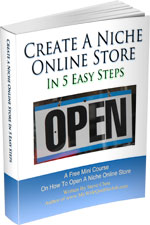
Ready To Get Serious About Starting An Online Business?
If you are really considering starting your own online business, then you have to check out my free mini course on How To Create A Niche Online Store In 5 Easy Steps.
In this 6 day mini course, I reveal the steps that my wife and I took to earn 100 thousand dollars in the span of just a year. Best of all, it's absolutely free!

